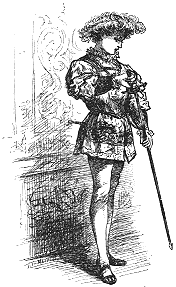Aesop's fables
By The Brisish Council.
The ant and the dove
An ant went to the bank of a river to quench its thirst, and being carried away by the rush of the stream, was on the point of drowning. A dove sitting on a tree overhanging the water plucked a leaf and let it fall into the stream close to her. The ant climbed onto it and floated in safety to the bank. Shortly afterwards a birdcatcher came and stood under the tree, and laid his lime-twigs for the dove, which sat in the branches. The ant, perceiving his design, stung him in the foot. In pain the birdcatcher threw down the twigs, and the noise made the dove take wing.
And the moral of the story is: 0ne good turn deserves another.
The cat and the mice
A certain house was overrun with mice. A cat, discovering this, made her way into it and began to catch and eat them one by one. Fearing for their lives, the mice kept themselves close in their holes. The cat was no longer able to get at them and perceived that she must tempt them forth by some device. For this purpose she jumped upon a peg, and suspending herself from it, pretended to be dead. One of the mice, peeping stealthily out, saw her and said, "Ah, my good madam, even though you should turn into a meal-bag, we will not come near you."
And the moral of the story is: he who is once deceived is doubly cautious.
The Crab and the Fox
A crab, forsaking the seashore, chose a neighboring green meadow as its feeding ground. A fox came across him, and being very hungry ate him up. Just as he was on the point of being eaten, the crab said, "I well deserve my fate, for what business had I on the land, when by my nature and habits I am only adapted for the sea?'
And the moral of the story is: contentment with our lot is an element of happiness.




























